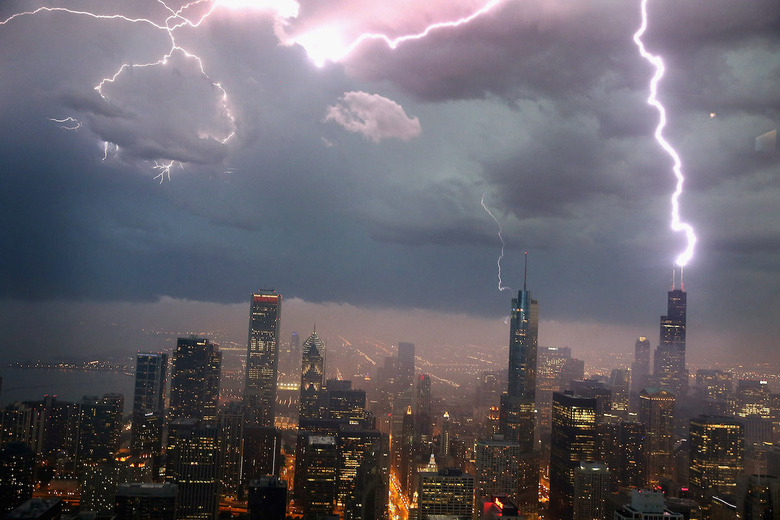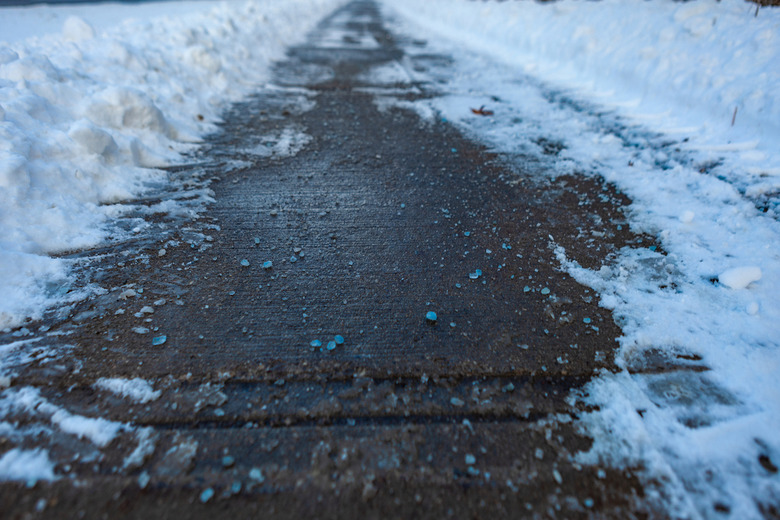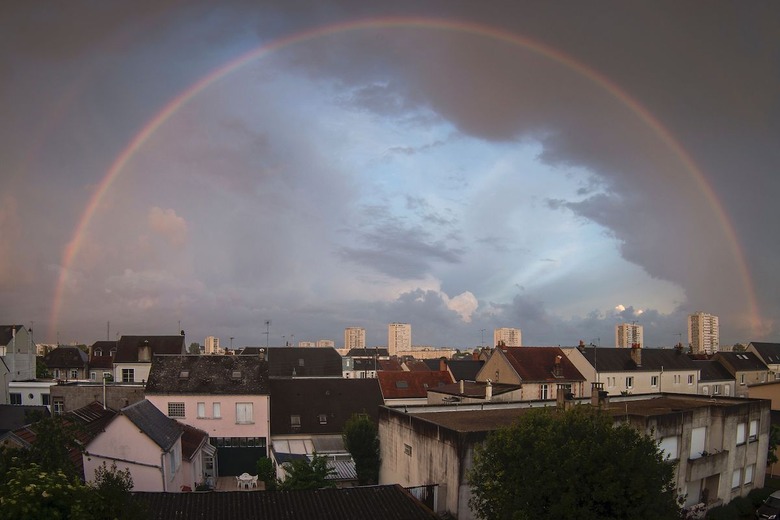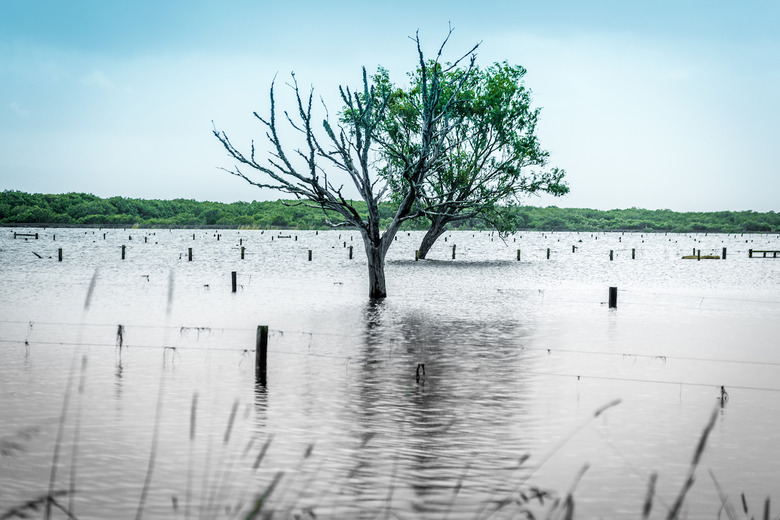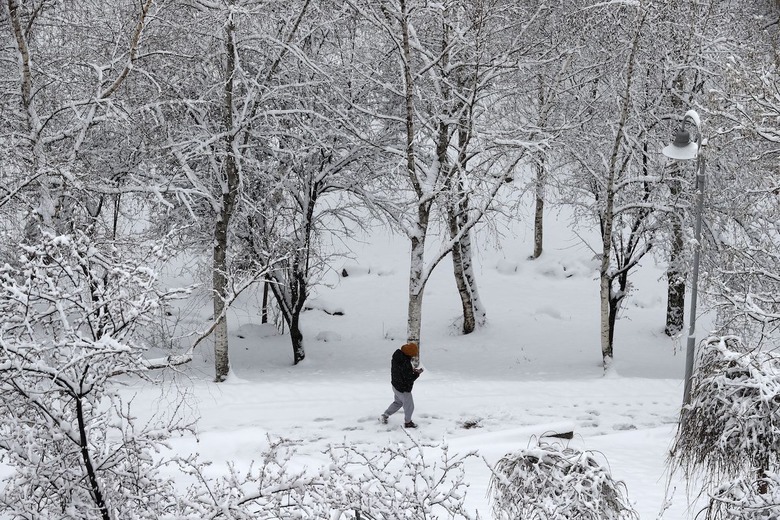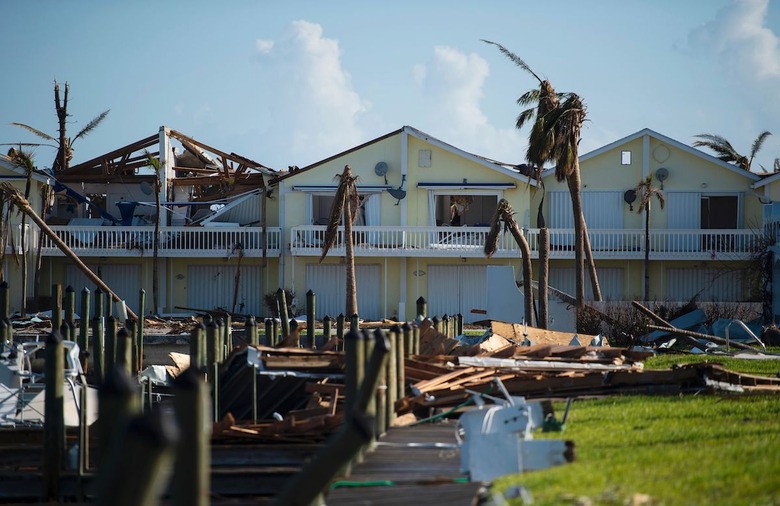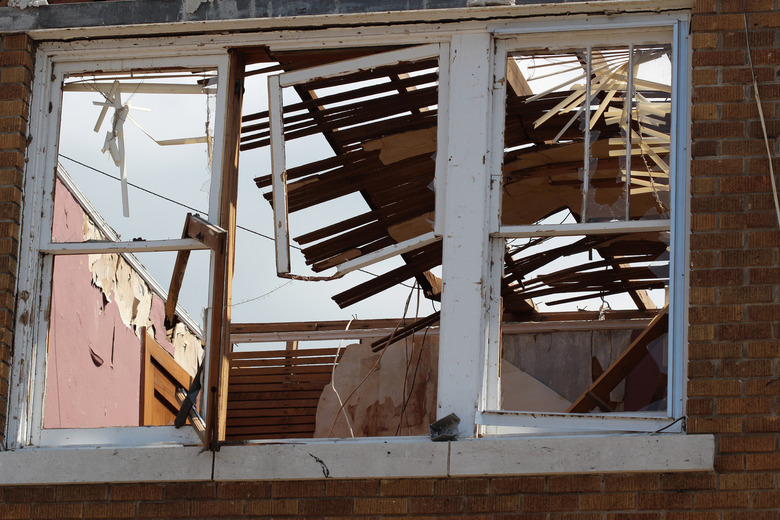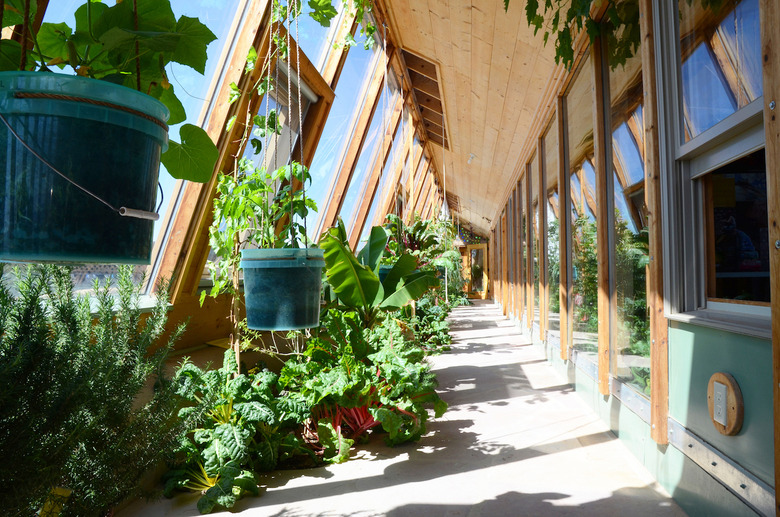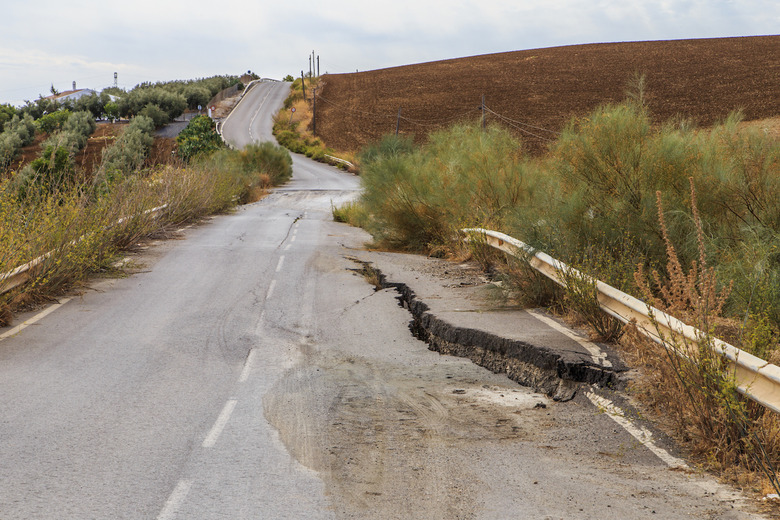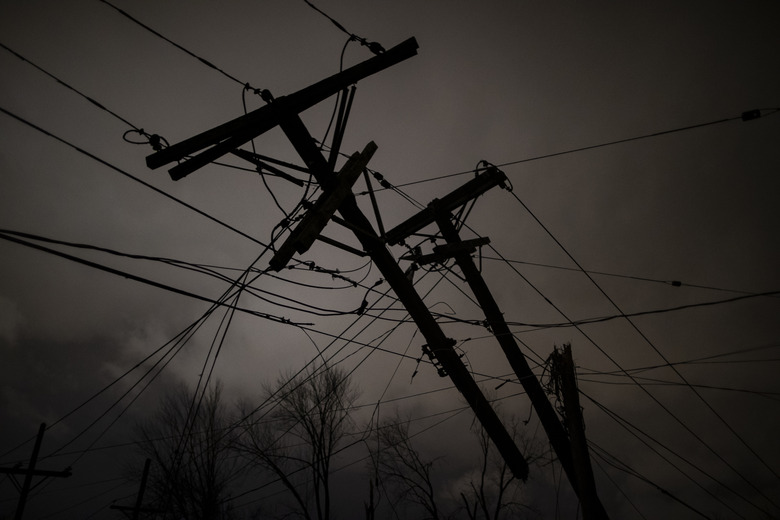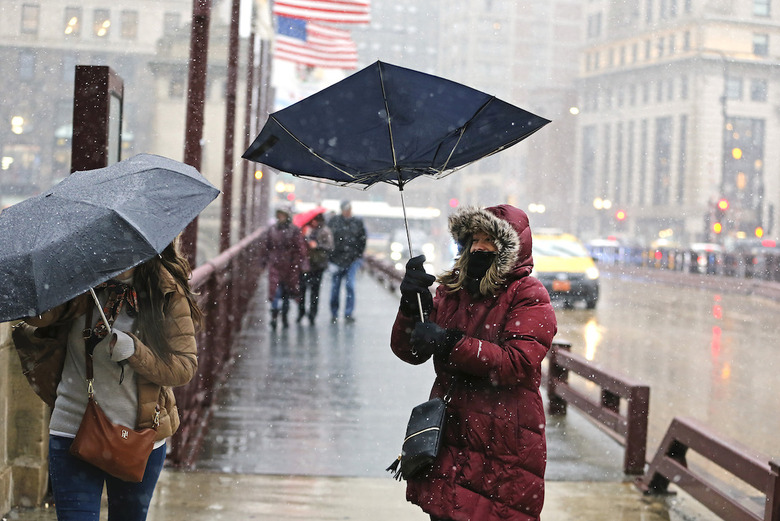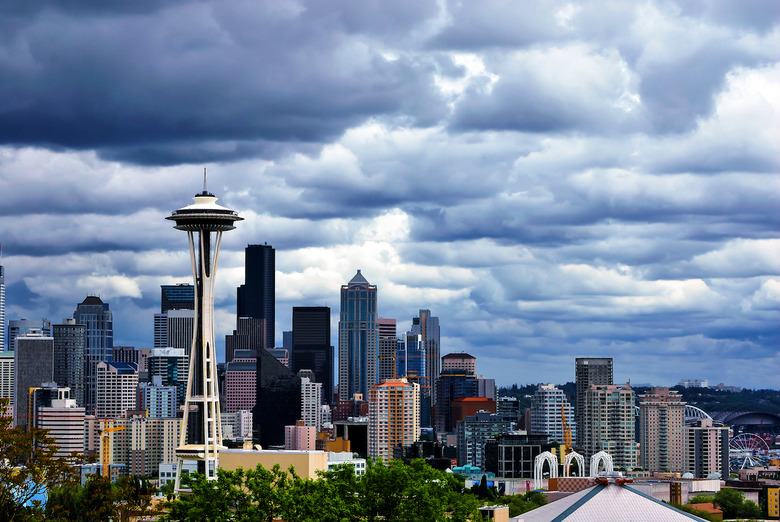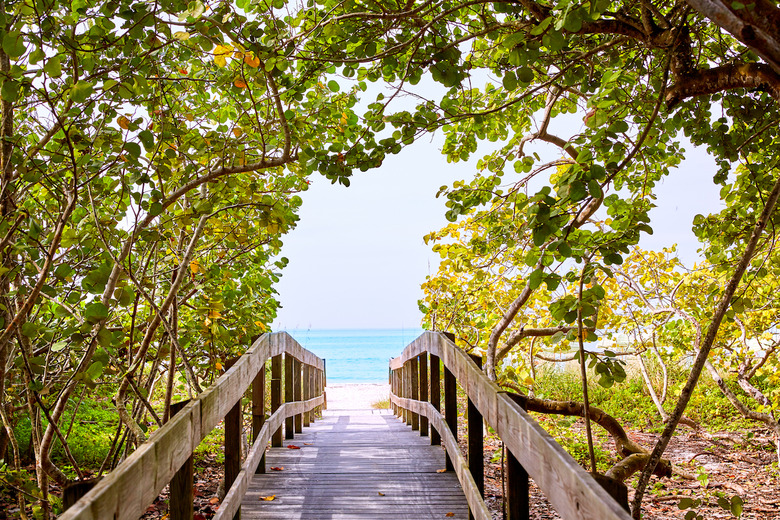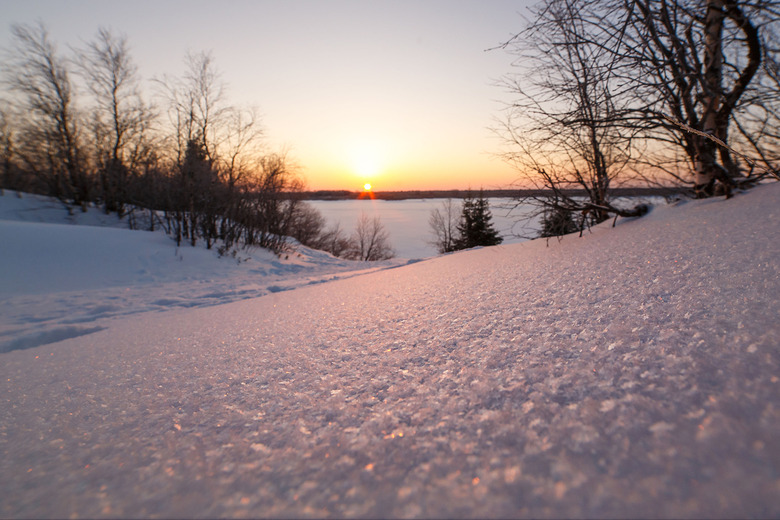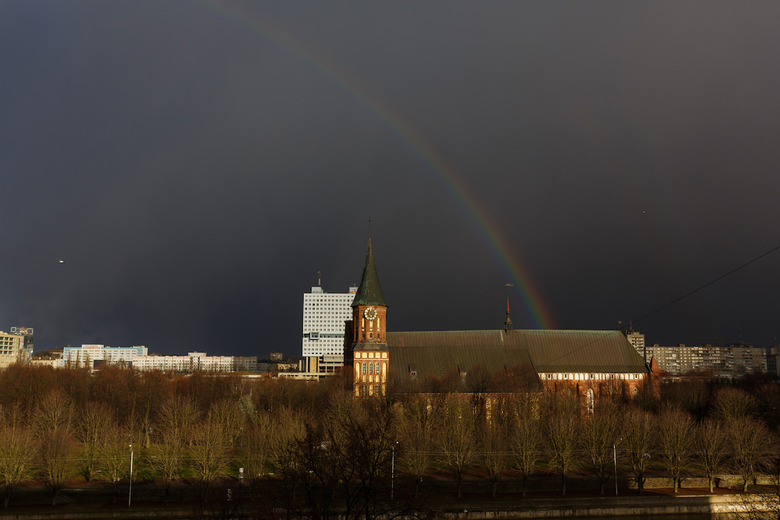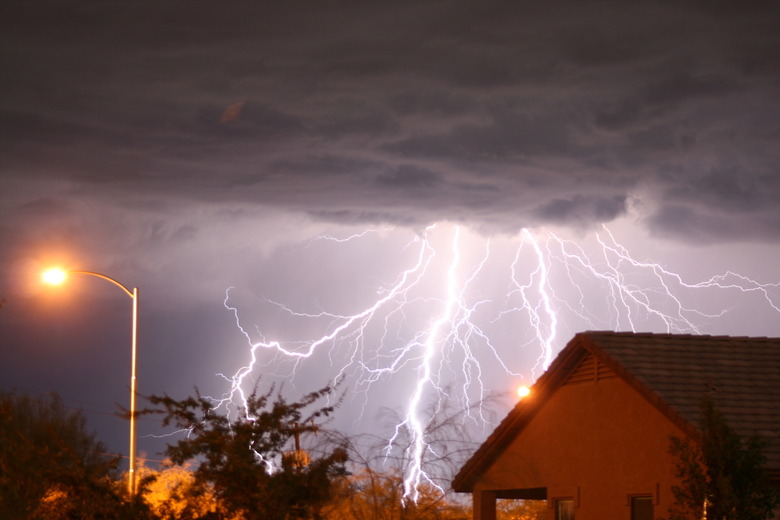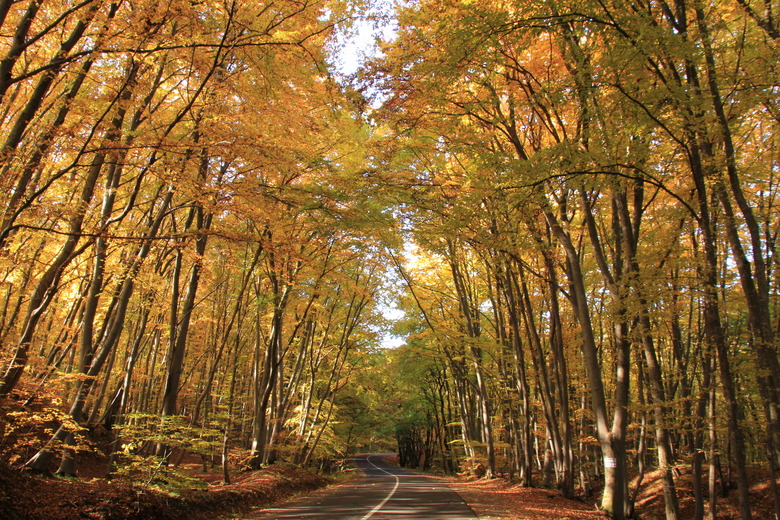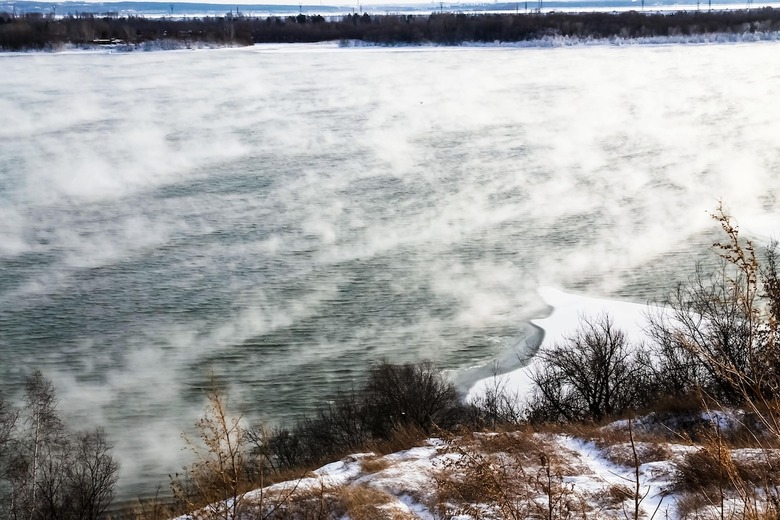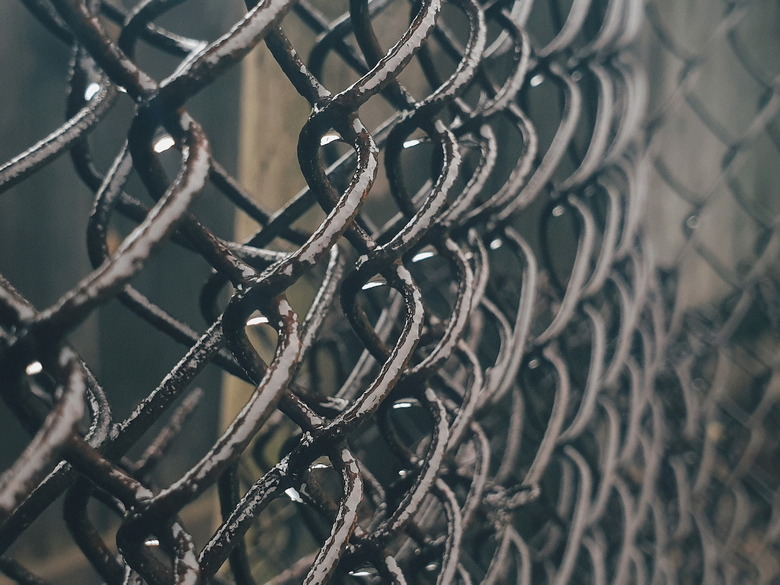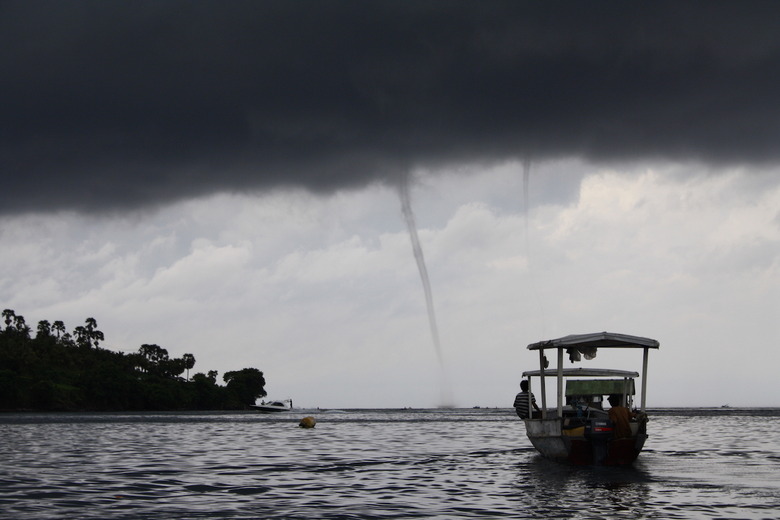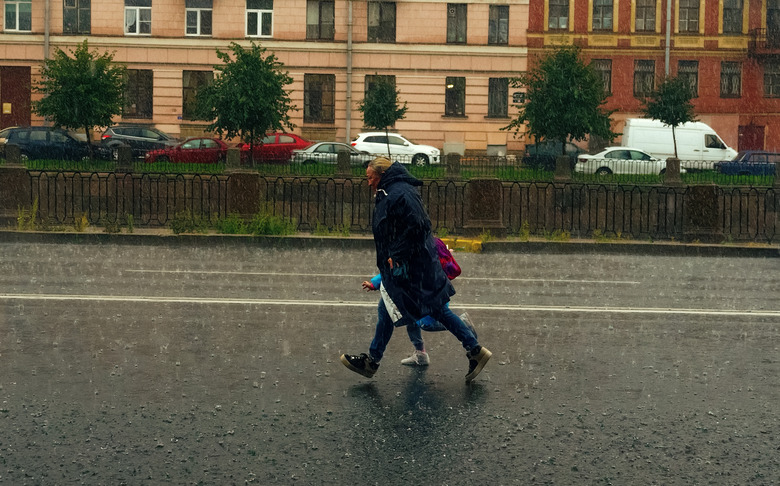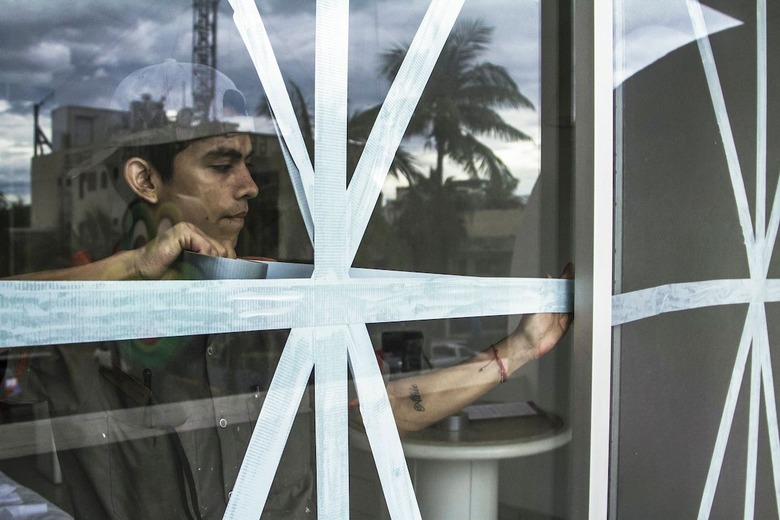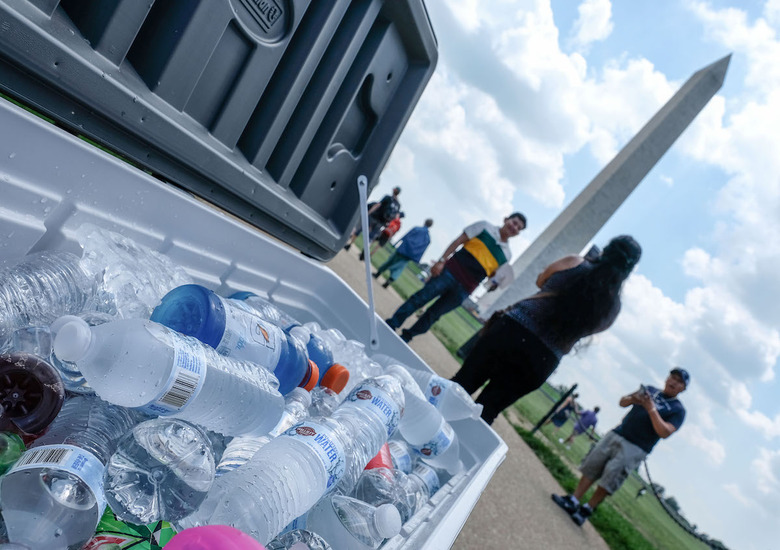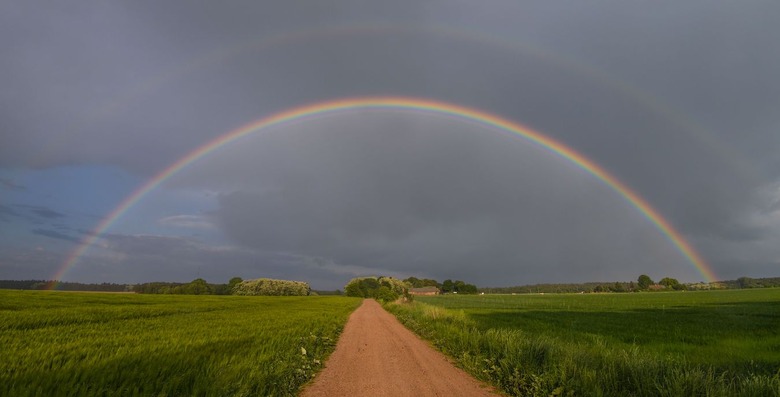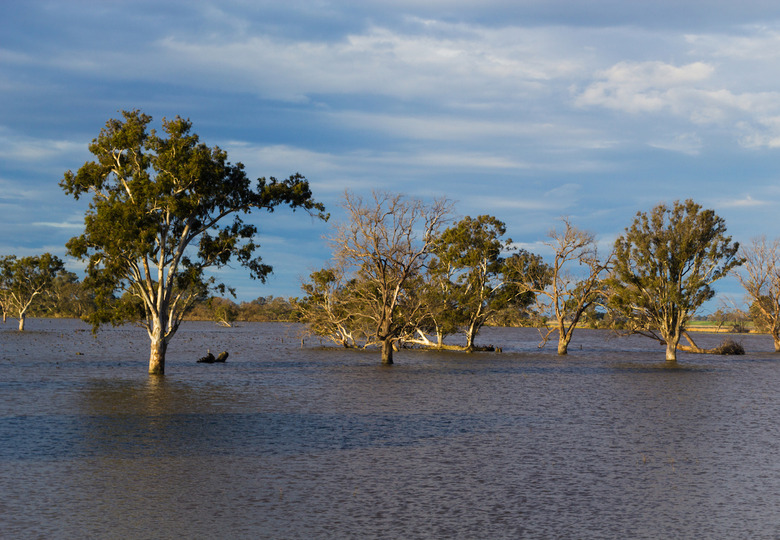April Showers Bring May Flowers And Other Weather Myths Debunked
Warm or cool, rainy, sunny, cloudy or stormy, weather plays a determining role in how we choose to spend our day. Hair-frizzing humidity and biting cold keep us inside. Untouched blanketed snow, a faint breeze and the right amount of sun call us outdoors.
At least in our minds, we know a lot about this weather thing. Yet, science is infinitely more complex than our knee-jerk assumptions and rhyming proverbs. Here are 30 weather myths debunked. Admit it, you've fallen for at least one.
Lightning doesn’t strike in the same place twice
Lightning does strike the same place twice — Roy C. Sullivan knew that much. The late Virginia man holds the Guinness World Record for most lightning strikes survived: seven. Tall buildings and other architectural beasts are known to have been struck by lightning on multiple occasions. The Empire State Building in New York alone boasts an average of 23 lightning strikes a year. In 2019, researchers for the first time observed lightning needles. These 300-feet-long and 15-feet-wide needles carry undischarged electricity back up to clouds, in turn creating more lightning bolts in a single flash.
Salt melts ice
More than simply melting, salt lowers the freezing point of water on the ground. This inhibits more ice from forming while still allowing the already-pooled water to melt more ice. Inexpensive and with a long shelf life, salt makes an excellent hack to remove snow and ice from your home.
April showers bring May flowers
A rainy spring, in general, will have a positive effect on your garden as the soil soaks up the moisture. However, April showers do not inherently bring May flowers. The season's first flowers are more tied to temperature changes than precipitation. A 2013 study found that as the warming climate moves the year's last frost weeks up, plants flower earlier too. When the last frost hits depends on your region and, more so than rain patterns, determines when you should plant your garden.
Rainbows have seven colors
Red, orange, yellow, green, blue and purple, when you put these colors side by side what do you think you've done? In the words of the world's most beloved purple dinosaur, you've made a rainbow and it's a really beautiful one. Unfortunately for us all who sang along, Barney was wrong. While those six colors, along with indigo, may be the easiest to see, a rainbow contains loads more. All sorts of in-between wavelength shades exist among the familiar primary colors.
Weather and climate are synonymous
While you may use weather and climate interchangeably, the two have critical differences. Weather refers to the day-to-day state of the atmosphere and how it changes across hours and minutes. Weather means precipitation, clouds, temperatures, wind and humidity. Climate refers to the average weather in a place over a longer time period (think 30 years). You can predict the weather by counting lightning strikes or checking for dew on blades of grass. Meanwhile, climate predictions aim to know how much warmer the planet will be in decades to come or how high sea levels will rise.
It’s too cold to snow
It can never be too cold to snow, ever. But heavy snowfall — the sort the snowiest states like Minnesota and South Dakota know well — becomes much less likely when temps drop below zero. Why? The colder the air, the drier too. Dry air results in less water vapor production necessary for precipitation. And unlike rising warm air, colder air remains stable and near the ground, preventing snow's release. Still, environmental factors like nearby mountainsides and open waters may increase snowfall too, making the seemingly impossible possible.
Hurricanes and typhoons are different types of storms
Hurricanes and typhoons are the same sort of tropical storm, the only difference depends on the storm's location. Hurricanes originate in the Northern Atlantic, central Northern Pacific and eastern Northern Pacific. Typhoons are relegated just to the Northwest Pacific. Both are tropical cyclones, rotating and organized systems of clouds and thunderstorms over tropical or subtropical waters. With winds upward of 74 mph, hurricanes and typhoons can visibly devastate communities.
Opening windows reduces tornado damage
Conventional wisdom may suggest you open the windows in your home during a tornado watch to equalize pressure and minimize damage. However, opening windows will only allow the entrance of damaging winds into your home, put you at risk of injury and waste precious time.
The Earth’s climate has always been changing
Natural cycles of Earth's warming and cooling cannot be used to explain the recent increase in global temperatures. Change that historically would take hundreds of thousands of years now takes decades. Being more sustainable in your day-to-day and monitoring your carbon footprint are ways to reduce that impact.
There’s such a thing as ‘earthquake weather’
According to the United States Geological Survey, equal amounts of earthquakes occur in cold, warm or rainy weather. There's no such thing as "earthquake weather." Fault slips have been known to be triggered by large low-pressure changes stemming from major storm systems, however, the numbers are not statistically significant.
You can catch a cold from the cold
One of several cold-weather health myths your mother got wrong, you cannot catch a cold from the cold. There are over a billion colds in the U.S. every year. These colds are viruses spread through the air an infected person releases and contaminated surfaces they touch, not cold weather.
Cities and tall buildings aren’t hit by tornadoes
Tornadoes are typically 5 to 10 miles tall, putting even a building 1,000 feet high at risk. Cities from Nashville and Miami to Houston and Salt Lake City have been hit by tornadoes in recent years.
Chicago is the windiest city
Known as the Windy City, Chicago is both a safe and expensive place to visit. But what is Chicago not? An actual windy city. In 2019, 24/7 Wall Street gathered wind speed data from the National Oceanic and Atmospheric Administration. With average annual speeds of 16.1 mph and a 96 mph max wind speed, Cold Bay, Alaska, is the true windiest city in the country. Chicago doesn't even crack the top 40.
Seattle is the rainiest
Based on another 24/7 Wall Street dive into NOAA data, Seattle ranks third in the U.S. for the title of rainiest city. Both Longview and Mount Vernon-Anacortes, Washington, beat out the Emerald City. Washington also ranks high among best states to raise a family in.
Florida is the sunniest state
While the Sunshine State nickname suits Florida's gorgeous beaches and bright sun well, Florida is just 84.43% as sunny as Arizona, the sunniest state in the Union. Eight other states outshine Florida too.
The Earth is farthest from the sun in January
Don't be misled by the cold temperature that comes with a new year. Earth is not farthest from the sun in January. The planet's tilt away from the sun's rays causes winter temps, not its spot in orbit. In fact, it's at aphelion — about two weeks after the June solstice during the northern hemisphere summer — that Earth is farthest from the sun. In 2020, Aphelion Day falls on Independence Day in the U.S.
Rainbows happen only during the day
Look up at a clear evening sky and you might just spot a moonbow, a nighttime rainbow lit by the moon's light. The moon must be at near full phase for its reflected light to shine bright enough for a moonbow to form. A moonbow's colors are less vivid and more diffused than daytime rainbows but the typical ROYGBIV hues are still present.
Heat lightning exists
Can humid conditions and hot weather light a night sky void of thunder or rain? No, but what you are seeing at night — flashes of light without any rain or thunder — is still lightning. You need to be within 10 to 15 miles of a thunderstorm to hear its thunder roar but anywhere within 100 miles of a storm to view its lightning. Luckily, "heat lightning" makes for perfectly safe viewing or weather photography given your distance from the storm.
Sunburns only occur during summer
Pro skincare tip: keep the sunscreen nearby and handy all year-round. According to the Skin Cancer Foundation, UVB rays — the leading cause of sunburn — shine brightest in the summer. However, they are capable of damaging skin year-round, especially at high altitudes. Not to mention, snow reflects 80% of the sun's UV light, doubling the exposure and potential harm. Make applying a broad-spectrum sunscreen with an SPF of 15 or higher a part of your daily routine.
Seasons start and end on solstices and equinoxes
The seasons are subjective. There are both meteorological and astronomical seasons. Astronomically speaking, seasons are set by two solstices and two equinoxes. Meteorological seasons are broken down into three-month-long groupings. December, January and February make up winter; March, April and May form spring; June, July and August summer; and September, October and November fall. So while there's much to do on the day of the vernal equinox, celebrating the meteorological first day of spring may not ever be one.
You can see water vapor
In its gaseous state, water turns to water vapor, and no matter how hard you try, you cannot see it. All this time, you have likely mistaken wet steam — lifted liquid particles of water suspended in the air alongside true water vapor — for water vapor.
You can balance an egg on its head on the spring equinox
Contrary to this popular myth, you can balance an egg on its head on any ordinary day, not just the spring equinox. According to Scholastic, the key to this fun at-home science experiment is patience, practice and finding an egg with a yolk centered in its shell.
Metal attracts lightning
More so than whether or not it's made of metal, an object's chances of being struck by lightning depend on height, isolation and shape. Being made of metal neither increases nor decreases these chances. However, metal does act as an electrical conductor, so stay clear of metal fences, railings or devices.
Tornadoes cannot cross water
Tornadoes have been documented to cross the Mississippi River and several other large bodies of water. Large lakes do not protect areas either. Cool air and water from the lake can provide a locally stable environment, however, the forces propelling a tornado forward are larger and stronger than the lake can inhibit.
If caught in a rainstorm, shelter under a tree
Do not seek shelter under a tree in the rain, no matter how much you want to keep dry. Being under a tree is the second leading cause of lightning casualties.
Tape up your windows during a hurricane
A waste of time, energy and resource, taping up your windows during a hurricane provides little strength to glass and no protection from flying objects. Should a hurricane warning be issued in your area, shutter all windows and doors for protection.
Big storms are the deadliest weather
More than big winter storms or other storms like floods, hurricanes and tornadoes, extreme heat produces the greatest number of fatalities. According to the National Weather Service, over a 30-year period from 1986 to 2015, an average of 130 people lost their lives due to extreme heat. Floods resulted in the second-highest number of deaths at 81.
Clouds from planes are chemtrails
Not chemtrails but contrails. Planes, like cars, trail exhaust. The streams of white air airplanes leave suspended in the sky after a takeoff are clouds of water vapor that freeze and condense around small particles of aircraft exhaust. Known as contrails, these clouds are made up of gases like carbon dioxide, water vapor, nitrogen oxides (NOx), carbon monoxide and hydrocarbons.
Rainbows only double
If double rainbows are magical, imagine triple and quadruple rainbows. To view these ultra-rare beauties, look toward the sun, not opposite the sun, as you do to see a traditional or double rainbow. The first scientifically accepted photo of a quadruple rainbow was captured in 2011.
Flash floods need a nearby stream
No stream required, flash floods occur both in dry creeks, riverbeds or urban areas where there are no streams in sight. Floods can be the result of heavy rain or the aftermath of devastating natural disasters.
More From The Active Times
10 Extreme Weather Phenomena That Only Happen During Winter
45 Extreme Weather Conditions Pro Athletes Have Endured
What Happens When You Don't Get Enough Sleep

